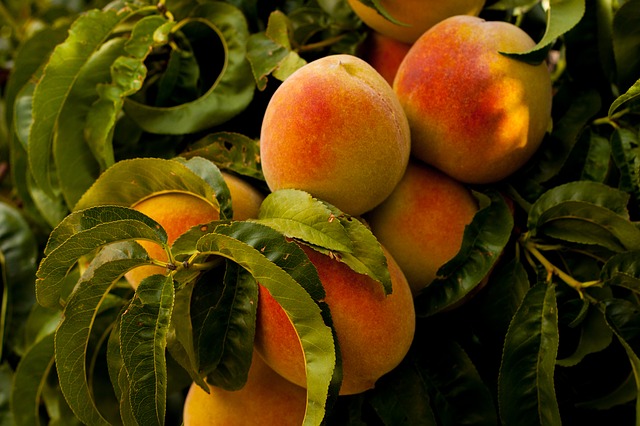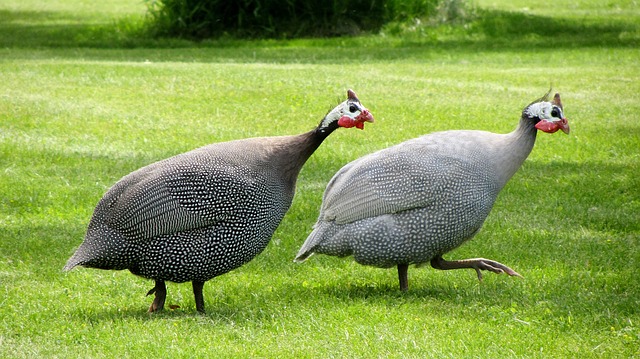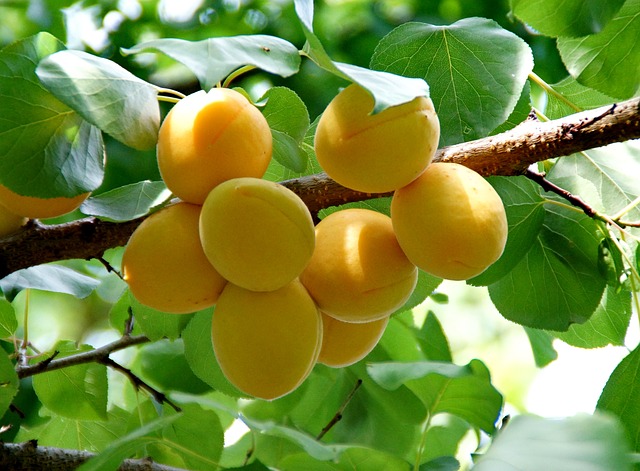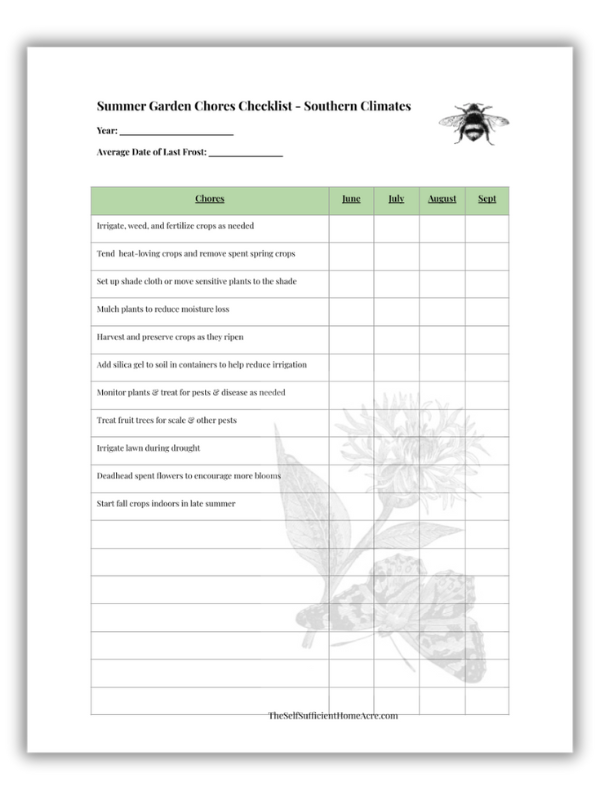Why Grow Your Own Fruit Trees?
Many people are interested in growing more of their own fruits and vegetables. Planting fruit trees for self-sufficiency is a great way to provide for your family. You have control over what is sprayed on your food, there will often be a surplus, and you’ll have fruit for canning, freezing, dehydrating, and eating right out of hand.
Homegrown fruit is more nutritious than store-bought because it wasn’t shipped across the country and you can use it at the peak of perfection. You also have the option of planting heirloom varieties that have better flavor, keep over winter, or make the best preserves.
Any extras that you don’t eat can be shared, stored, sold, or fed to livestock. Planting a home orchard is a giant step forward in self-reliance.
Choose the Best Fruit and Nut Trees for Your Homestead
This page contains affiliate links. You will not pay any extra when you purchase products through these links, but I will receive a small commission. Thank you for supporting The Self Sufficient HomeAcre!
Getting Started – Planting Fruit Trees for Self-Sufficiency
Why not plant a few fruit trees in your own backyard? If you have space limitations you may be able to plant dwarf trees that can be controlled through espalier training. Several companies offer columnar apple trees that take only a few feet of space. Plant these small trees along the side of a fence or your home in full sun to grow more food in less space.
Learning to grow fruit requires time and patience. You will need to plant, water, prune, and feed your fruit trees for several years before they begin to yield a harvest in return. To grow your fruit organically, you will need to learn about the pests in your area and the time of year that they lay their eggs or feed upon your prized crops. Summer oils, natural pesticides, barriers, and handpicking insects can all help protect your fruit from these pests. There are many new organic products available to the home orchard enthusiast through companies like Gardens Alive that will help you raise attractive organic fruit.
Can I Really Grow Fruit Trees Organically?
I’ve planted fruit trees at every home Tom and I have owned. I’ve never sprayed them with artificial pesticides. It makes it more difficult to raise fruit that is free from pests, but it’s worth the effort. It is very likely that some of the fruit will need to be cut up and used in jams, sauces, or baked into pies…but that hardly seems like a sacrifice.
Cherries attract birds who want to eat the harvest before it’s ripe. Invest in some netting that can be used every year to cover the trees or bushes as the fruit is beginning to color up. The birds will probably get some of the fruit through the netting, but you’ll harvest the majority.

Preventing Insect Damage
Insect pests may be managed with sanitation, predators, and organic sprays when necessary. Practice good sanitation by cleaning up dropped fruit and removing fruit that sticks to the branches after harvest.
Yellow sticky traps and red spherical traps coated with petroleum jelly will trap and kill adult pests that are looking for mates and places to lay their eggs. Yeast traps may be made from clear plastic cups or bottles and filled with a solution of water, sugar, and baking yeast that attracts insects such as the spotted wing drosophila.
Barrier sprays made from water and kaolin clay will coat the developing fruit and prevent the adult pests from laying their eggs. Care must be taken to spray at the right time to prevent killing honey bees and other pollinators. In small home orchards, fruit can be protected with fine netting bags that are placed over the fruit before pests lay their eggs. These bags can be sewn from sheer curtains or light nylon material that allows air circulation but keeps insects out.
Poultry Patrol!
Guinea fowl are good at picking insects off without doing a lot of damage to crops. A small flock of these strange looking birds may take care of the majority of your pests for you! Chickens, ducks, turkeys and geese may be allowed to free-range the rest of the year to clean up fallen fruit, pests and weeds.
Make Your Own Fertilizer
Compost your kitchen and yard waste to side-dress your fruit trees every spring. Grind the bones from your table to supply calcium. Compost manure from your livestock for a year and add to your orchard. If you don’t have your own chickens or other livestock, keep your eyes open for farms and horse barns nearby. They will often let you take as much manure as you want for free. Plant greens manures to help supply nutrients to your fruit trees.
Choose the Right Trees for Your Area
Find out what hardiness zone you live in and then research the fruit trees that will do best for your area. If you live in the south you may not have enough chilling hours over the winter for fruit such as apples and pears, but you may be able to grow citrus and peaches. I live in zone 5a, too cold for figs, nectarines, most cultivars of peaches, sweet cherries, and a whole host of other fruits that I love. I can grow some varieties of apple, pear, hardy peaches, pie cherries, apricots, and plums.
While researching the best varieties for my area, I read through information from our local Extension Office and nursery catalogs. Some catalogs will list a tree as being a zone hardier than other catalogs. If you are concerned, err on the side of caution and choose only the hardiest trees for your area.
Plant for Cross-Pollination
Many fruit trees will not self pollinate, so you will need more than one variety for proper pollination and fruit set. Some trees will produce better with a pollinator, so choose varieties carefully and plant close enough for the bees to carry pollen from one tree to another.
If you have neighbors with fruit trees, you may not need as many varieties for cross-pollination. When choosing fruits for small spaces, try to choose varieties that are self-fruitful or look for trees that have more than one variety grafted onto the same tree.
Here’s the rundown of my new orchard and the varieties I chose for cross-pollination:
- Apples – Golden Delicious, Arkblack, Lodi (all 3 are hardy to my zone and Golden delicious is known as a universal pollinator for most apple trees)
- Plums – Alderman, Superior (both hardy to my zone and will pollinate each other)
- Pie Cherry – Dwarf North Star, Montmorency (both hardy and self-pollinating)
- Peach – Contender (marginally hardy in my zone, so I have it planted in a protected spot, self-pollinating. Reliance is another hardy variety)
- Pears – Bosc, Bartlett (hardy to my zone, Bartlett is a good pollinator for Bosc, but Bosc is not the best pollinator for Bartlett. I hope to fit another pear tree in at some point and will choose another pollinator)
Start Out Right
Planning ahead will make your home orchard experience much more rewarding. Be sure to follow the planting instructions, space requirements, and keep your new fruit trees watered according to directions. Cherry trees don’t like wet feet, so don’t overwater. Doing some research ahead of time will help you make the best choices for your growing conditions and space limitations. Most fruit trees will not begin to bear for at least 2 or 3 years, so plan ahead and get started as soon as you can!
How do you increase your self-reliance by gardening? Share in the comments!
As an Amazon Associate, I earn a commission from qualifying purchases.


















When is it best to prune lemon trees?
Hi Lilly,
I found this site that gives a lot more info…
https://www.doityourself.com/stry/how-to-prune-lemon-trees
The best time is after the autumn harvest. Hope this helps!
An easier question would be, what don’t we have? Pears, peaches, apples, cherries, almonds, plums… the list goes on and on. I just love fruit trees. 🙂
Hi Nancy,
I’m looking forward to your pretty pics of all those lovely fruits!
Very informative article. We inherited a Kiefer pear tree when we bought our property (a prayer retreat center in Indiana). The tree is ugly and deformed and I was sure that it would need to be cut down, but can it produce fruit! I have pruned it hard and it just keeps producing. A few years ago I planted a couple of apple trees and last year I got one apple. I’m hoping for a few more this year. This year I also planted another apple tree, and a cherry, peach and eating pear tree. After reading your article I wish I had done more research on the trees that I planted, but we will see. Thinking I might want to do the research and plan to plant some more.
Hi JoLyn,
Best wishes with the trees that you have already! Have fun choosing new ones too. 🙂 It’s hard to stop!
We have fig, apple, plum, peach, pear, blueberries, persimmons, mucadines and scuppernongs. I am adding some additional nut trees this year and expanding my selection of apple varieties and peaches. I just love having my own fruit for jellies and jams, and I am also able to freeze some to have in the winter months. Living in NW Georgia, we have an excellent climate for most friut trees, shrubs and vines. Thank you so much for this wonderful, informative article. Much luck with your new place and new orchard. Jenn
Hi Jenn,
Your orchard sounds heavenly! Thanks for sharing your experience with us! So happy to have you visit!
Excellent post! Thanks for sharing.
We are lucky to have mature fruit trees, they were here when we moved in. We have several different types of apple, a pear, a couple of cherry, and plum not to mention the nut trees! Most of the nuts are eaten by the squirrels and the apples are almost inedible because of all the worms. Thanks for the tips. I’ll be looking into them in the hopes of saving our crops.
Hi Melissa,
that’s wonderful that you ‘inherited’ mature trees! I’ve planted them in every yard we’ve owned, and always moved before, or soon after, they started to bear. It will probably be the same here. Oh well. Hopefully someone will be able to use the fruit!
We have Mango and Avocado on the property. I’d like to add fig and apple oned day.
Thanks for sharing at Tuesdays with a Twist! Hope to see you again this week!
https://back2basichealth.blogspot.com/search/label/Tuesdays%20with%20a%20Twist
Hi Mary,
The mango and avocado would be lovely! Best wishes with your additional fruit trees!
Be aware of whether your area is prone to late frosts. If so, you’ll want to choose trees that bloom later. Also, check with your local extension office for recommendations of varieties.
Great suggestions, Vicki! Thanks for sharing!
I’m so fortunate. There has already been an orchard for many years. The trees don’t look that great but they have fruits. It depends on the spring weather if there will be cherries and prunes. Every second year different trees have lots of apples or only a few. I’m looking forward to lots of Gravensteiners this fall. 🙂 And there is the walnut tree, alternating as well (is this a used expression in English too?). Wish you luck with your homesteading! Regula
I haven’t mentioned the blossoms (I live in apple county of Switzerland), now it is hightime. So beAuTiFuL!
Hi Regula,
The apple country of Switzerland sounds amazing! How wonderful to have that scenery surrounding you! Alternating is a good way of describing the fruit set of trees that bear heavily every other year. I think you can reduce the fruit on the heavy year to increase the amount it bears the off year…but it is time consuming. How wonderful that you can expect a bumper crop of Gravenstein apples this year! I miss having full grown fruit trees. Enjoy those trees to the fullest. 🙂
Thanks for sharing!
We were lucky to get some bearing fruit trees with our home. We never spray, hardly ever prune, but often we can give away buckets full of fruit, and live well on our harvest. I don’t store complete fruits -which is labour intensive and after all your efforts have to put up with shrivelled apples, but stew, dry and make jams, pies and wine (and hopefully some vinegar coming year). To be honest, not every year gives such successes, sometimes blossoms freezes, sometimes there are simply hardly any blossoms at all. But I’m very happy to have those trees.
That’s awesome, Heidi! It seems that I usually have very wormy fruit if I don’t do something with them as they are developing. But it may be because the neighbors had trees to and didn’t clean up the fallen fruit.
Thanks for sharing your experience! Enjoy your harvest…Sounds like you have some great trees!
No fruit trees yet. Need to finish construction first! BUT I am planning on a handful – more if I can talk my backyard neighbor into chopping down that HUGE pine tree that shades 1/2 of my entire yard!
Hi Terri,
They might be willing to prune it up a bit if they don’t want to remove it entirely. You can plant some of the really small dwarf trees along the side of your house or garage, or a fence in full sun. Keep them pruned back pretty hard for small spaces. Best wishes!
We can’t really grow fruit well here. We have early warm weather in the spring which wakes everything up, followed by a notorious Easter freeze which kills the blossoms. We also have terrible pests so organic pest control would be time consuming. We’ve considered the idea of espaliered trees which might be easier to manage and once we’ve gotten on our feet, we’ll probably give that a try in a year or two. We did however plant several native sand plum and mulberry trees as part of our windbreak. They aren’t peaches and apples, but they’ll do and since the are what some consider to be “weeds” (ish) I think they’ll be pretty hardy.
Hi Jenny,
Wild fruit trees will often tolerate less than ideal conditions much better than our coveted apples and pears. 🙂 You could plant your espaliered trees up close to the house for a warmer micro-climate…easier to cover if a late frost threatens.
We just had a hard frost here last night and I’m wondering if my little fruit blossoms will survive.
Jams, sauces, and pies … a “sacrifice” I’m willing to accept. 🙂
You’re so accommodating 🙂